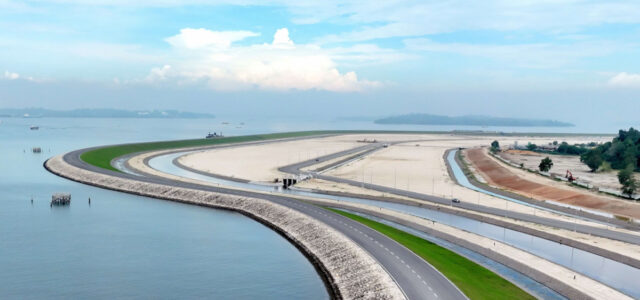Singapore reclaims 800 hectares of land at Pulau Tekong for military use, freeing up mainland for new housing and amenities
singapore-reclaims-800-hectares-of-land-at-pulau-tekong-for-military-use-freeing-up-mainland-for-new-housing-and-amenities
#Singapore #reclaims #hectares #land #Pulau #Tekong #military #freeing #mainland #housing #amenities,
SINGAPORE: Singapore has reclaimed about 800 hectares of land at the north-western tip of Pulau Tekong, roughly the size of two Toa Payoh towns. The new land will be used for military training, which will free up space on the mainland for Singaporeans’ new housing and amenities, the Housing & Development Board (HDB) and PUB, Singapore’s national water agency, said in a joint press release on Monday (Sep 8).
The project marks the first time the city-state has reclaimed land below the mean sea level.
Using the empoldering method, engineers created a polder—low-lying land reclaimed from the sea—by building a 10-kilometre coastal dike, supported by a network of drains, water pumping systems, and a stormwater collection pond.
The dike rises up to six metres above mean sea level, keeping the polder about 1.2 metres below it, and the dike can be raised further if sea levels increase.
To address Singapore’s high rainfall and dry weather, the polder is fitted with a 116-hectare stormwater collection pond, two pumping stations, and a 45-kilometre drainage network with more than 30 control gates.
The Central Pumping Station, next to the collection pond, circulates water through the drains to ensure good water quality, while the Drainage Pumping Station near the coastal dike pumps excess rainwater out to sea when the pond is full.
During heavy rain, runoff from both the polder and Pulau Tekong flows into the pond, which can hold up to five million cubic metres of water, or about 2,000 Olympic-sized swimming pools. When the pond nears capacity, excess water is then pumped out to sea. Meanwhile, water is recirculated through the drains to prevent stagnation during dry weather.
Compared with the traditional reclamation method, where land is built up above sea level by filling it with sand, the empoldering method used about 50 per cent less sand.
HDB and PUB said they drew on the Netherlands’ experience to ensure the long-term viability and safety of the polder land. The Netherlands is recognised for having the world’s highest standards in dike safety.
“Singapore will continue to leverage innovation and technology for our reclamation and coastal protection strategies in a responsible and sustainable manner,” they added. /TISG
